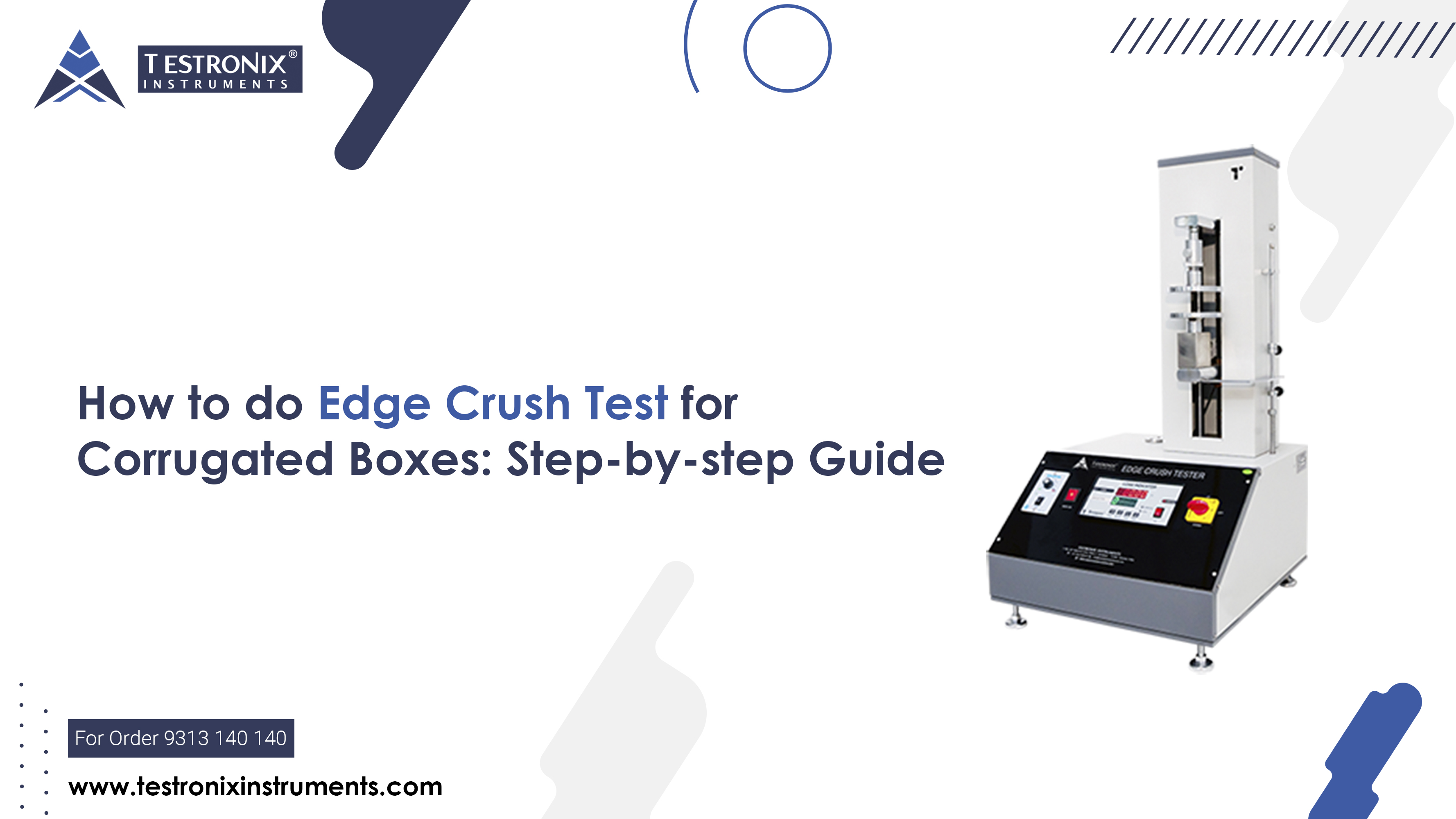
Corrugated boxes play a crucial role in the packaging industry, serving as the primary method of protecting products across numerous sectors, including e-commerce, food and beverage, and consumer goods. With the constant challenges of transportation and storage that can put packages at risk, ensuring the strength and durability of these boxes is paramount.
Among the various methods used to evaluate the integ rity of corrugated boxes, the Edge Crush Test (ECT) stands out as one of the most reliable and widely adopted. This standardized method provides critical insights into the edgewise compressive strength of corrugated materials, fundamentally determining whether a box can withstand the pressure exerted during stacking and transit.
What is the edge crush test for corrugated boxes?
The Edge Crush Test, or ECT is a laboratory testing method that measures cross-directional crushing force of corrugated boards. It assesses the strength of a corrugated sheet as it determines if it can withstand compressive loads along its edge or not.
The ECT, usually in kN/m, is used to measure the box's stacking strength. The higher the ECT, the stronger and more robust the box, which can handle heavier or more fragile contents.
Key Features of Edge Crush Test:
- Digital Display: Provides clear readings for accurate assessment.
- High Accuracy Load Cell: Ensures precise measurement of compressive strength.
- Microprocessor-based Controls: Enables easy operation and automation.
- Adjustable Compression Rate: Allows customization based on material requirements.
- ASTM Compliance: Ensures the equipment meets standard testing requirements.
- Secure Hold Fixtures: Guarantee stability during testing.
Technical Specifications of Edge Crush Tester
The Edge Crush Tester evaluates the edgewise compressive strength of corrugated boards, ensuring packaging durability and load-bearing performance. Here are some technical specifications mentioned of Edge Crush Tester:
- Advanced electronic displays deliver accurate measurements.
- Modular fixtures support ring, edge, and flat crush testing.
- Reliable data output under compression stress.
- Real-time display of specimen compression force.
- Feather-touch controls enhance ease of operation, while the RCT/FCT/Edge Crush Tester accurately reveals crushing resistance measured in Kg per unit length.
- Offers ±0.5% accuracy at full load using master calibration.
- Load cell capacity is 100 Kgf.
- Power supply: 220V, Single Phase, 50 Hz. Test speed: 12.5 ± 2.5 mm/min.
- Measurement Resolution: 10 grams.
Step-by-Step Procedure for Edge Crush Testing
The Edge Crush Test (ECT) evaluates corrugated board compressive strength. Instructions: condition sample, place machine, align sample, start test, note result, re-run for confirmation. The following is a step-by-step edge crush testing procedure:
Step 1: Sample Preparation
- Cut the corrugated board to the standard length (typically 100 mm × 25 mm).
- Make sure edges of the samples are smooth, perpendicular and free from burr.
- Verify the corrugated material for any faults or irregularities before conducting the test.
- Leave the sample to equilibrate with the testing environment temperature and humidity level for a minimum of 24 hours to avoid the effects of the environment on the test.
Step 2: Conditioning
- Condition the samples in a conditioning chamber at 23°C ± 1°C and 50% ± 2% RH for at least 24 hours to condition the material.
- Make sure that the conditioning chamber is continually checked to ensure there are uniform temperature and humidity conditions.
- Treat the samples with care throughout conditioning to prevent damage or contamination.
- Employ a hygrometer and thermometer to ensure the chamber conditions fall within the range.
Step 3: Installation of the ECT Machine
- Switch on the Edge Crush Tester (ECT Machine).
- Calibrate the machine as per the manufacturer's manual.
- Choose the edgewise compression test mode.
- Ensure that the test platen is clean and free from any debris or contaminants before loading the sample.
Step 4: Sample Placement
- Position the test sample vertically between the platens for compression.
- Ensure the flutes are facing a direction perpendicular to the platen surface (vertical orientation).
- Double-check that the sample is equally centered between platens to evenly distribute forces on the test.
- Confirm that the edges of the sample are properly aligned, not to cause leaning results or readout errors upon testing.
Step 5: Test Initiation
- Start the Compression cycle.
- The machine will apply an increasing load up to the breakage of the sample.
- Observe the test run to make sure the load is applied consistently and evenly.
- Make sure the speed of the machine and load application are within the given test parameters to achieve accuracy.
Step 6: Observe the Results
- The machine will indicate the peak load at break.
- Mark the reading in kN/m or lb/in as the ECT reading.
- Repeat the test on at least five samples and determine the average for reliability.
- Note any differences or inconsistencies in readings between samples for further evaluation or recalibration.
Why use the Testronix ECT tester for corrugated boxes?
In conclusion, it is essential to keep corrugated boxes strong and durable in order to ensure safe product delivery and customer satisfaction. It is required to choose a reliable edge crush tester (ECT) for precise, uniform, and standardized quality testing in the packaging industry.
The Testronix edge crush tester is highly dependent on for accuracy, ease of use, and long-term usage. Equipped with state-of-the-art microprocessor controls and simplicity of operation by means of a simple user interface, the tester provides high-accuracy test results every time. With ease of reading test values in digital form, and a rugged build ensuring long-term usage even at high-volume test conditions.
In addition, Testronix ECT tester is in accordance with international testing standards such as TAPPI T-811 and ASTM D7030, the best option for packaging professionals requiring reliability and dependability.
